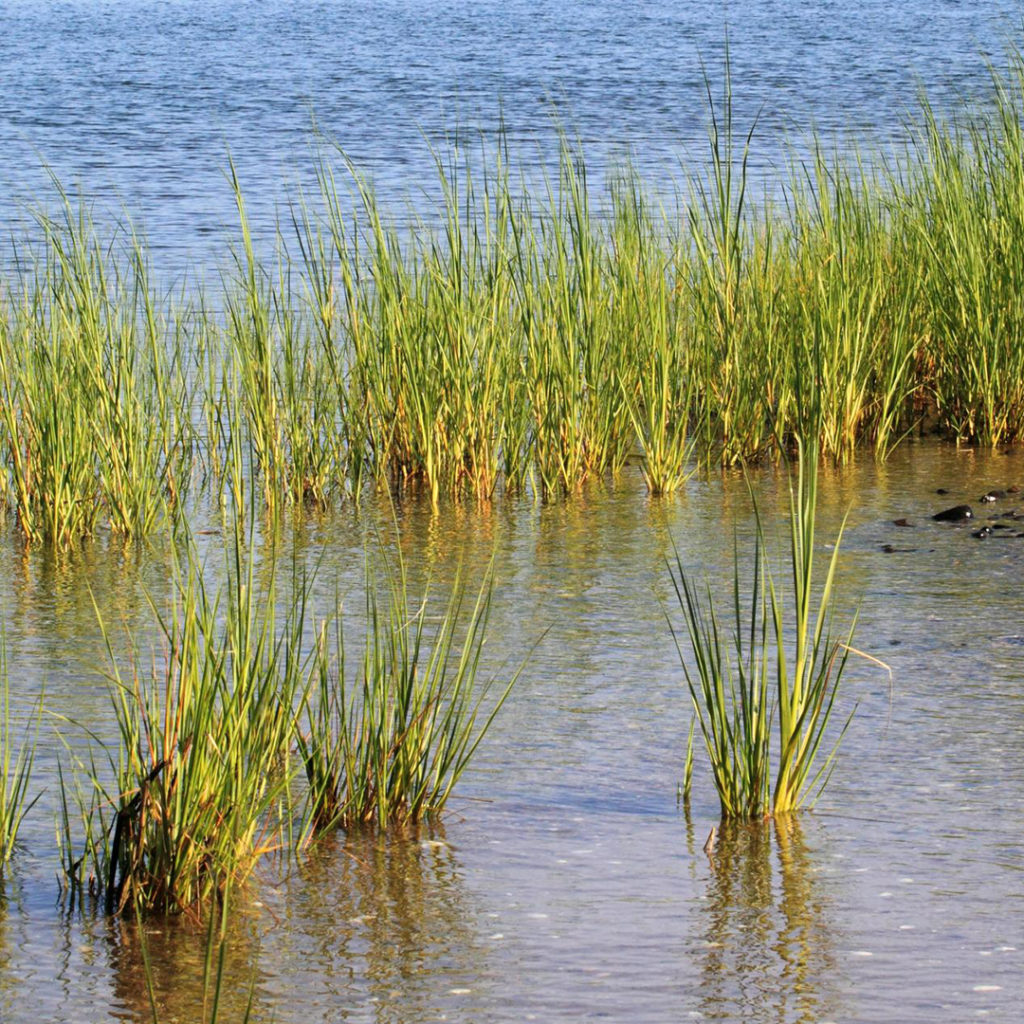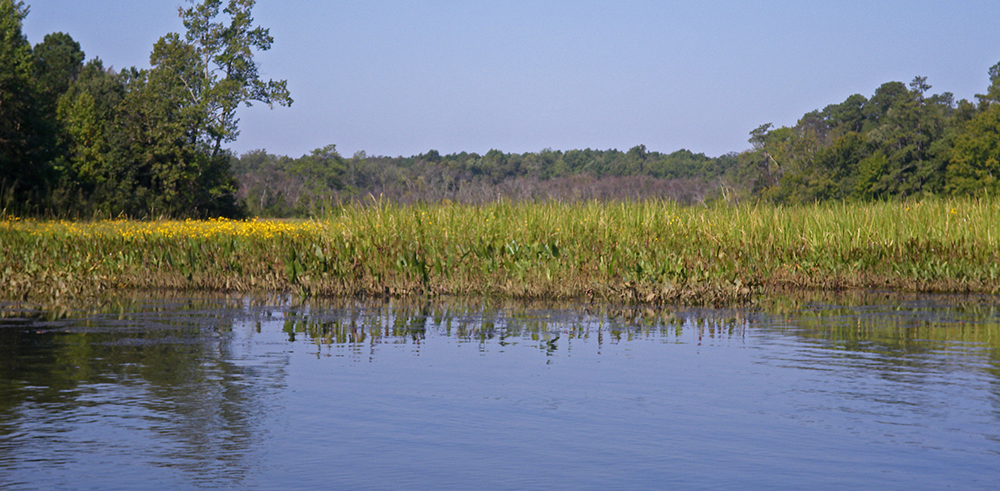 Marshes throughout the Lower James are influenced by tides, the periodic rising and falling of water. Twice a day, every day, the water will rise and fall by about two feet. What causes this? And why does it happen with such regularity? The answer is right above our heads!
Marshes throughout the Lower James are influenced by tides, the periodic rising and falling of water. Twice a day, every day, the water will rise and fall by about two feet. What causes this? And why does it happen with such regularity? The answer is right above our heads!
The gravitational pull of the moon will slightly pull on the water (and land!) on the Earth’s surface as it orbits around the planet. This bulge of water would uniformly travel around the world, but continents and islands get in the way, creating local variation!
The height of local tides will vary with the phase of the moon and local geography. “Spring” tides occur during the New and Full moons and have the highest and lowest tides of the month. “Neap” tides occur during the half-moons and have weakest change between high and low tide. Some places around the Gulf of Mexico and the Caribbean have unpredictable wind driven tides that will come and go with weather systems. While the Bay of Fundy in Maine and the Canadian Maritimes has the highest tides in the world, over 40 feet!
What does this constant change in water level mean for the plants and animals that call the marsh home? They have to handle periods of complete dryness as well as inundation. Oysters will seal themselves up if they are left high and dry, while fiddler crabs will retreat to their burrows when the water rises. Plants such as smooth cordgrass have special adaptations that allow them to continue breathing while submerged.
Tides bring with them constant change, but the dynamic plants and critters that call marshes home are tough and more than capable of dealing with it!
The James River Association is committed to restoring the shorelines within the tidal Lower James and its many tributaries.

